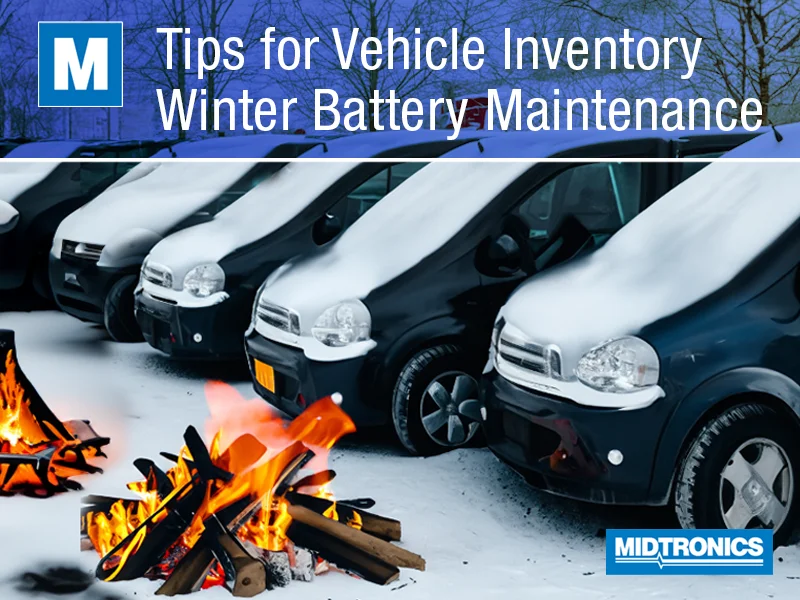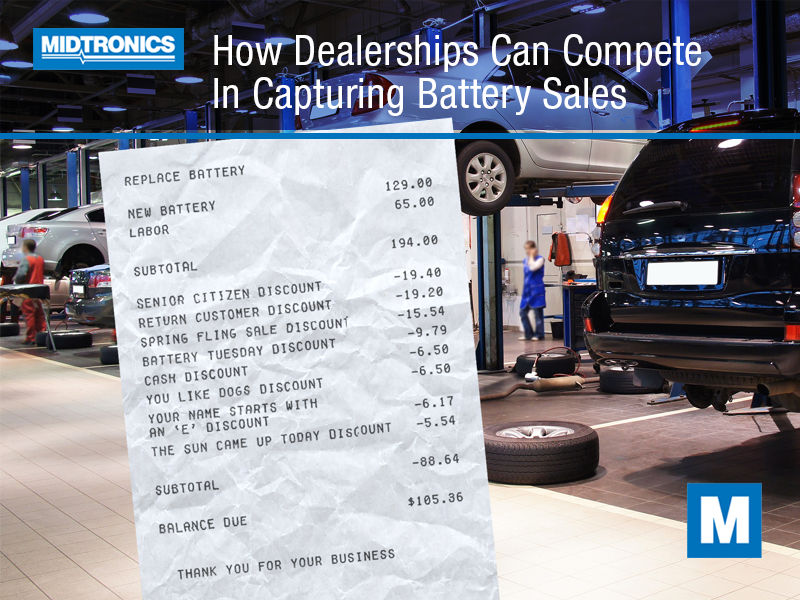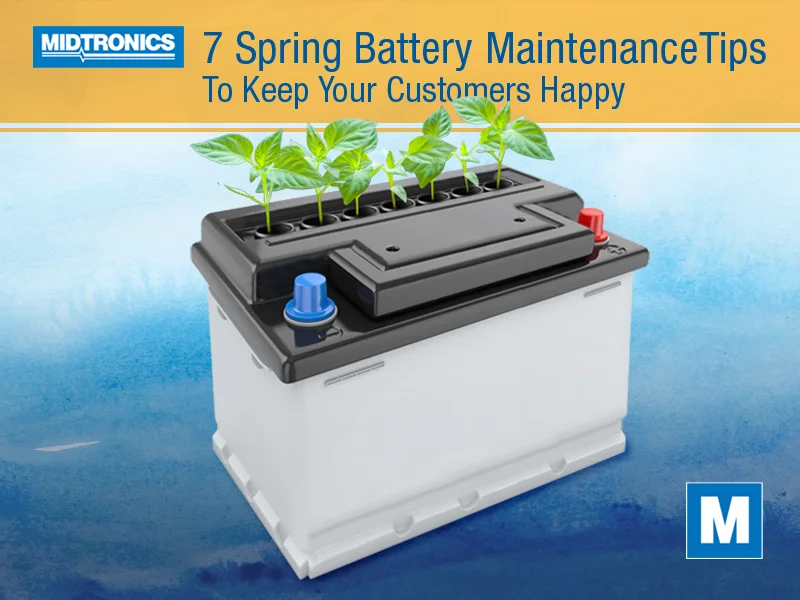As winter sets in and temperatures plummet, automotive dealerships face the challenge of ensuring that the batteries in their vehicle inventory remain in optimal condition. Cold weather can have a significant impact on battery performance, leading to reduced capacity and potential issues for both new and used vehicles.
In this article, explore six essential tips for automotive professionals to maintain a full charge in vehicle batteries during the winter months, especially in areas where temperatures drop well below freezing.
Why Maintaining Batteries Over Winter is So Important
Any car sales manager in a region where there’s snow for multiple months of the year is familiar with the frustration. A dead battery in a car on the lot, whether new or used, has frozen and needs to be replaced. That charge, upward of $400 for some EFB or AGM batteries, is a steep cut into the car’s profit margin.
But that may not be the largest cost for a dealership when it comes to a frozen battery. Imagine a salesperson with a customer in tow walking up to a vehicle they’re considering. The doors won’t unlock with the key fob, then the ignition doesn’t turn over when they try it. A dead battery causes them to lose faith in not just that particular vehicle, but in the dealership, causing them to lose a prospective sale.
Add to that the aggravation of clearing snow on the lot. When the full sales team gets together to move cars so snow-clearing equipment can do its job, vehicles with dead and frozen batteries make the job take exponentially longer than it needs to.
A modest investment in time and resources to keep batteries fully charged can prove beneficial several times over. Here are six tips.
Invest in Quality Battery Charging Equipment
One of the fundamental aspects of winter battery maintenance is the use of high-quality battery charging equipment. Investing in reliable and efficient chargers designed for automotive batteries is crucial. Look for equipment that provides a controlled charging process, preventing overcharging or undercharging, both of which can be detrimental to a battery’s health.
Our latest technology, MDX-AI, employs intelligent charging algorithms designed to optimize the charging process, ensuring that batteries are charged efficiently and safely, even in cold weather conditions.
Regular Battery Testing and Diagnostics
Implementing a proactive approach to battery maintenance involves regular testing and diagnostics. Establish a routine that ensures every vehicle’s battery is tested at least once per month. Any batteries that are low on charge are put in a queue to top up their charge.
This routine testing process can be a tough sell for commission-based team members. However, lot personnel are likely to embrace it since it reduces the frustrating daily interruptions when they’re called away to help boost a car.
Make Charging the Battery Part of Vehicle Reconditioning
For pre-owned vehicles that arrive on transport trucks, it could have been weeks since the last time the engine was run long enough to fully recharge the battery. If they pass through a reconditioning inspection and head to the lot, there’s a higher likelihood that they’ll be one of the vehicles with a frozen battery during the winter – even if the battery is deemed healthy but low on charge.
Establish an add-on for reconditioning that allows the technician a modest bump to recharge the battery fully while it’s in the shop, so long as it’s accompanied by a test result showing it’s necessary. The reduction in battery replacement costs with more than make up for slightly higher recon charges.
Provide Cold Weather Storage Solutions
In extremely cold climates, consider implementing cold weather storage solutions to protect vehicle batteries. This may include insulated storage areas or utilizing battery blankets and wraps designed to retain heat.
These add-ons, such as battery blankets that are dealer-installed, can be passed along to the customer who benefits from it once the car is in their possession. Cold weather can significantly reduce a battery’s capacity, and providing a warm environment can help mitigate this effect.
Educate Sales Teams on Battery Care
Sales managers play a crucial role in maintaining battery health throughout the winter. Educate your sales teams about the impact of cold weather on batteries and the importance of proper care during vehicle storage. Ensure that all team members are aware of the dealership’s battery maintenance protocols and are equipped to address customer inquiries about battery health.
Additionally, organize quick training sessions on the use of testing and charging equipment so that sales professionals can not just deal with battery issues on their own, but provide accurate information to potential buyers regarding the condition of a vehicle’s battery.
Install Battery Trickle Chargers
For vehicles that are not frequently driven or tested, such as those in the back of the lot or in storage, consider installing battery trickle chargers. These chargers deliver a low, constant charge to the battery, preventing it from discharging over time. Trickle chargers are particularly beneficial for maintaining battery health in vehicles that may not see regular use during the winter months.
Don’t forget about vehicles in the showroom either. It’s common for these units to have a low battery, get boosted and driven out of a warm building, then parked where the battery dies and freezes. It’s a good plan to put trickle chargers on all showroom vehicles.
As winter approaches, proactive battery maintenance becomes paramount for automotive dealerships, especially in regions with harsh winter conditions. By investing in quality charging equipment, establishing a maintenance schedule, coming up with cold weather storage solutions, and other ideas, dealerships can ensure that their vehicle batteries remain in optimal condition throughout the winter months. It saves time and money, and prevents customers from being turned off by a bad experience.




